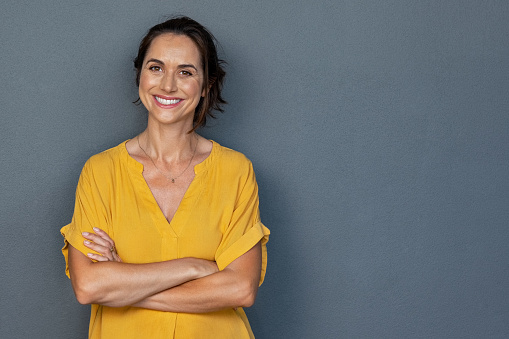
Changes to the FRCR Clinical Oncology 2B Exams (FRCR CO2B)
18 Oct, 202318 Minutes
Most medical exams don’t stay the same forever – often, there are changes to ensure the exams align with current standards. That’s what happened recently with the FRCR CO2B examination.
If you’re an IMG who has yet to take the FRCR CO2B exam, you will naturally want to know all the changes made so that you can prepare adequately. Luckily, we have listed everything that has changed (as well as the things that have stayed the same) in this article!
FRCR CO2B: A Brief Overview
Before going into all the changes made to the FRCR CO2B exam, it’s good to know what exactly it is. FRCR CO2B is part of the FRCR (Oncology) examinations, which test an oncologist’s clinical skills and abilities. These exams are set by the Royal College of Radiologists and come in three parts: Part 1, Part 2A, and Part 2B. FRCR CO2B is part 2B, the final stage of the assessment. Upon completing and passing FRCR CO2B, the candidate is awarded a Fellowship in the Royal College of Radiologists, a high-level qualification taken at the end of specialty training in oncology.
Why the Change?
The change to FRCR CO2B came about for several reasons, including:
To meet the high standards set by the General Medical Council.
The GMC has very high standards, and the examinations must ensure they meet those standards – making adjustments can keep things fresh and challenge new applicants!
For the exam to cover the new oncology curriculum.
When the oncology curriculum changes, so must the exam. With some adjustments, the FRCR CO2B exam can cover everything a high-level oncologist should know by the time they take the exam.
To provide the smoothest delivery of examination.
Examiners want to be sure that the exam runs as smoothly as possible, ensuring that there are enough spaces to meet capacity and that the exam itself is feasible. For example, previously, the exam was changed due to the difficulty of using patients, especially when COVID came along.
Overall, the change to FRCR CO2B was decided upon to meet content requirements and standards, ensuring that the structure was refined in a way that benefited both the examiners and the candidates. The change officially occurred in the Autumn of 2023 – any exam before then would have followed the older structure.

The 6 Changes to the FRCR CO2B Exams
As a doctor wanting to complete the FRCR (Oncology) exams, you will, of course, want to know exactly what changes have come about. In total, there are six definite changes to these exams, which we have listed below.
1: A Reduction in Stations
The number of stations has changed slightly. Previously, there were thirteen stations, but now there are twelve. While there are now fewer stations, it should be noted that two of the stations have been lengthened (communications and contouring, which we’ll go into later).
2: Oral vs Clinical: No More Distinction
One of the changes is the removal of the distinction between oral and clinical. That means all components, whether oral or clinical, will have the same amount of contribution to the FRCR CO2B examination.
3: New Marking System
There have been considerable changes to the marking system for FRCR CO2B to match the oncology curriculum. Particularly, the weighting has been altered. From Autumn 2023, here are the clinical skills assessed, as well as how many times they get assessed:
- Communication: Assessed 5 Times
- Clinical Judgement: Assessed 7 Times
- Managing Patients with Radiotherapy: Assessed 10 Times
- Interpretation: Assessed 5 Times
- Patient-Centred Care: Assessed 4 Times
- Managing Patients Receiving Systemic Anticancer Therapies: Assessed 5 Times
The examiners use a rating scale for each domain, which has four different marks: definite fail, just fail, just pass, and definite pass. Then, each station will also get a global rating scale: very poor fail, clear fail, borderline fail, clear pass, and very good pass. This will help give an overall pass mark.
4: A Skin and Palliative Station
Another big update to the exams is that there is now always a skin station and palliative station (previously these stations could have come up, but they weren’t definite). Also, the palliative station is no longer a narrative station – instead, it involves three short scenarios where you must provide quick answers.
5: Newly Formatted Stations
One of the most significant changes to FRCR CO2B is the changes to two stations: the communications and contouring stations. Here’s what to expect from each one:
Communication Station
The first station with a new format is the communication station. Before beginning this station, candidates receive a short brief and are given one minute to read through it and then ten minutes to complete the interaction. Many different scenarios can be here, such as breaking bad news, getting a patient’s consent to a trial, or any other kind of patient-oncologist discussion. You won’t know before the day what the communication scenario will be, but you will have encountered this at some point during oncology training.
The patient you communicate with will be an actor, making this a simulation station. The roleplay will last for ten minutes in total, and there will be no other examiner in the room. However, it will be recorded to be marked later by two examiners. The main thing you’re tested on here is your communication skills.
Contouring Station
The next new station is contouring, which has been extended to sixteen minutes. This station asks you to demonstrate your contouring skills. The candidate will be presented with two to three slices and asked to contour them while simultaneously discussing the process with the present examiner – this part lasts ten minutes. After that, the examiner will ask the candidate questions, which lasts four minutes.
6: Changes to Results and Feedback
Compared to the old FRCR CO2B exam, the results processing period will last longer. Plus, all candidates will receive standardised feedback, and this feedback will show the overall performance for each domain as well as a full breakdown of feedback from each station. Overall, this gives candidates a better idea and a more detailed view of their performance. You will receive this feedback whether you have passed or failed the examination.

What Has Stayed the Same?
Of course, there are also some things about the FRCR CO2B exam that have stayed exactly the same! Here is what hasn’t been altered in Autumn 2023:
Type of Content and Difficulty
In terms of the type of content and how much knowledge you need to pass, this has not changed in any way. So, you won’t need to study harder or absorb more information than you would have had to before.
Time at Each Tumour Station
The tumour stations have stayed the same regarding time. That means you get 5.5 minutes at each station, where you will interact with one examiner. The recording of each station will also be marked by a second examiner at a later date.
Three Days
During the proposal of the new FRCR CO2B exam, there was an attempt to reduce the exam to two days to make it shorter. However, in the end, it was decided the exam would still take place over three days. The reason for this was that reducing it to two days would have impacted capacity, and it was decided it was more important that all candidates could take the exam.
Fully Online
Lastly, the exam is still entirely online. Candidates attend an exam venue and then use the computer and video call system to interact with examiners and complete the exam. This is all recorded.
FRCR CO2B: The Format from 2023 Onwards
So, now you know all the changes and similarities to the old FRCR CO2B exam. To make it a little more straightforward, you can see everything to expect from the exam from Autumn 2023 onwards.
The exam will take place via video call in a remote delivery method. This happens in an exam venue with the examiners at the other end of the call. In total, there are twelve stations split into six sessions, which are as follows:
Session 1: Tumour Sites 1, 2, and 3
Session 2: Tumour Sites 3, 4, and 5
Session 3: Tumour Sites 7 and 8
Session 4: Tumour Sites 9 and 10
Session 5: Communications
Session 6: Contouring
All of these sessions are split over the course of three days. The exam will feel rushed, as it’s supposed to reflect a highly intense, high-pressure clinical environment. Be aware of this before going in!
Tips for Doing Well on FRCR CO2B
Do you have the FRCR CO2B exam coming up? The exam is anything but easy – it’s rigorous and requires a lot of preparation. That makes sense, as it’s meant for oncologists towards the end of their training. Here are some valuable tips for passing it.
Preparation is Key
The FRCR CO2B exam is meant to test you at the stage you are at in oncology specialty training – everything you come across, you should already be familiar with through your training. To prepare, it’s essential to make the most of your training. Regularly attending MDT clinics and practising the most common types of stations can help a ton, particularly in radiotherapy and palliative scenarios.
Ready Yourself for a High-speed Exam
The FRCR CO2B exam is designed to be high-pressure, so you’ll feel like you’re being pushed through each station quickly. There is a reason for this: to ensure you can handle intense, fast situations like this, which are common in real-life clinical situations. Mentally prepare yourself for this and find ways to reduce your stress. Also, when an examiner pushes you forward, listen to their cues and move along.
Practise with other Candidates
When training in oncology, you will likely have other doctors working alongside you who are also preparing for the exam. Buddying up with them is a really sensible idea, as you’ll be able to practise in pairs or threes, giving you more confidence in the delivery of your answers. In particular, focus on practising your timing and communication skills.
Read the Question with Care
As it’s such a high-speed exam, you might find you rush reading the questions, which can impact your answers. It’s essential to avoid this by reading each question carefully, ensuring your response is related to the case presented. It can help to read the question out loud. Also, be aware that everything given on the slide is important, so format your answer in relation to that.

Do the Changes Impact You?
The FRCR (Oncology) examinations are for those in higher specialty training. Completing FRCR (Oncology) is mandatory to qualify for the oncology training programme in the UK. If you are pursuing specialty training in oncology, you will eventually complete FRCR CO2B towards the end of your training, which means these changes do impact you.
If you have previously taken FRCR CO2B and passed, the changes to this exam do not impact you at all – your pass still stands.
In Summary
If you are going to take the FRCR CO2B at some point in the future, it’s crucial that you familiarise yourself with the content. Now that the exam has changed, it’s also vital that you get to grips with these changes so that you don’t prepare for an outdated exam! To sum up, here are the most significant differences and similarities of the new versus the old FRCR CO2B:
- The stations have been reduced from thirteen to twelve.
- There are new formats for the communications and contouring station.
- The marking system has been altered, and the weighting given has been altered.
- The exam still lasts three days, totalling six sessions.
- There will always be a palliative and skin station.
- The exam will take place online on a video call.
- There is no distinction between oral and clinical components.
- There is no change to the type of content or the difficulty.
By getting to grips with the changes and overall format of the FRCR CO2B examination, you can walk into the exam fully prepared and full of confidence.


